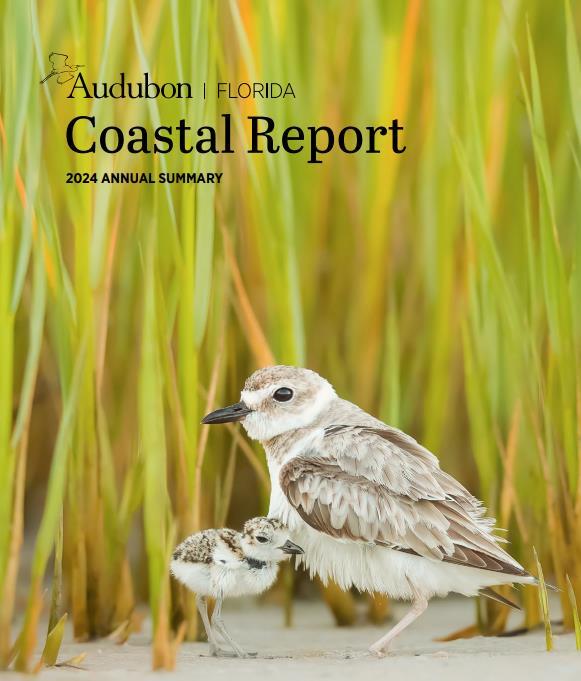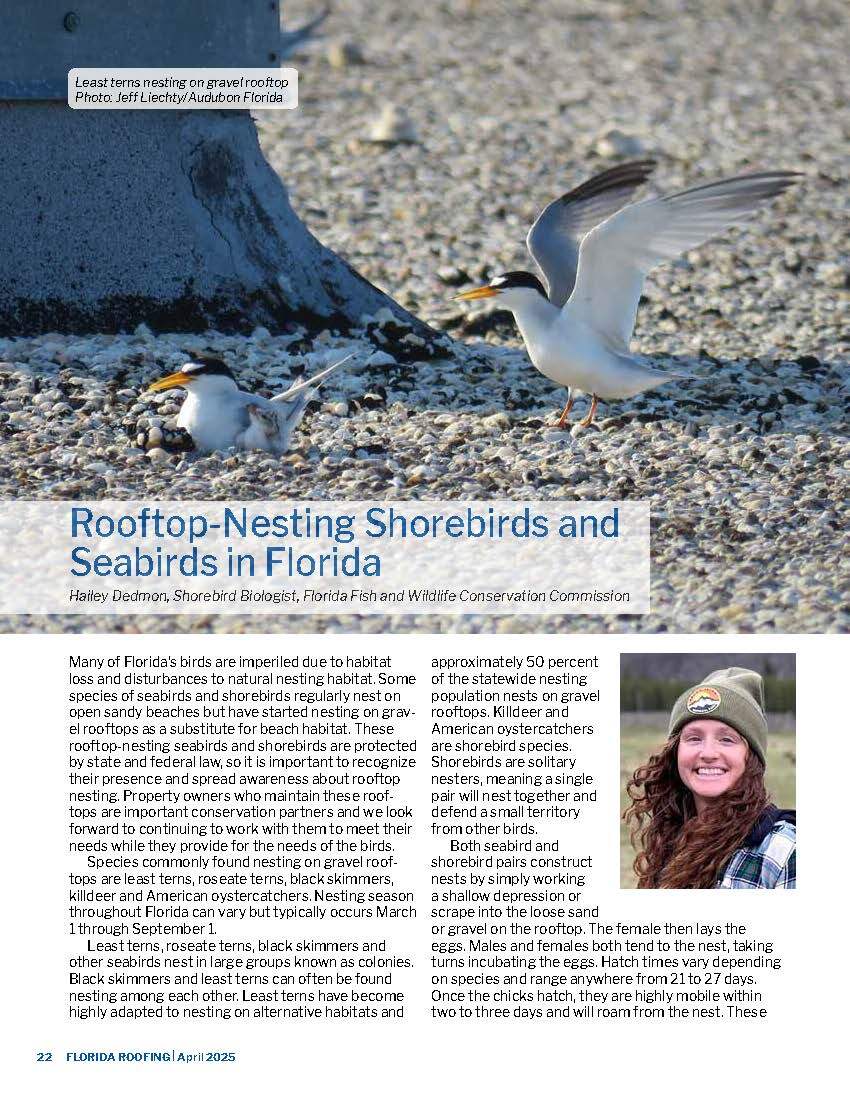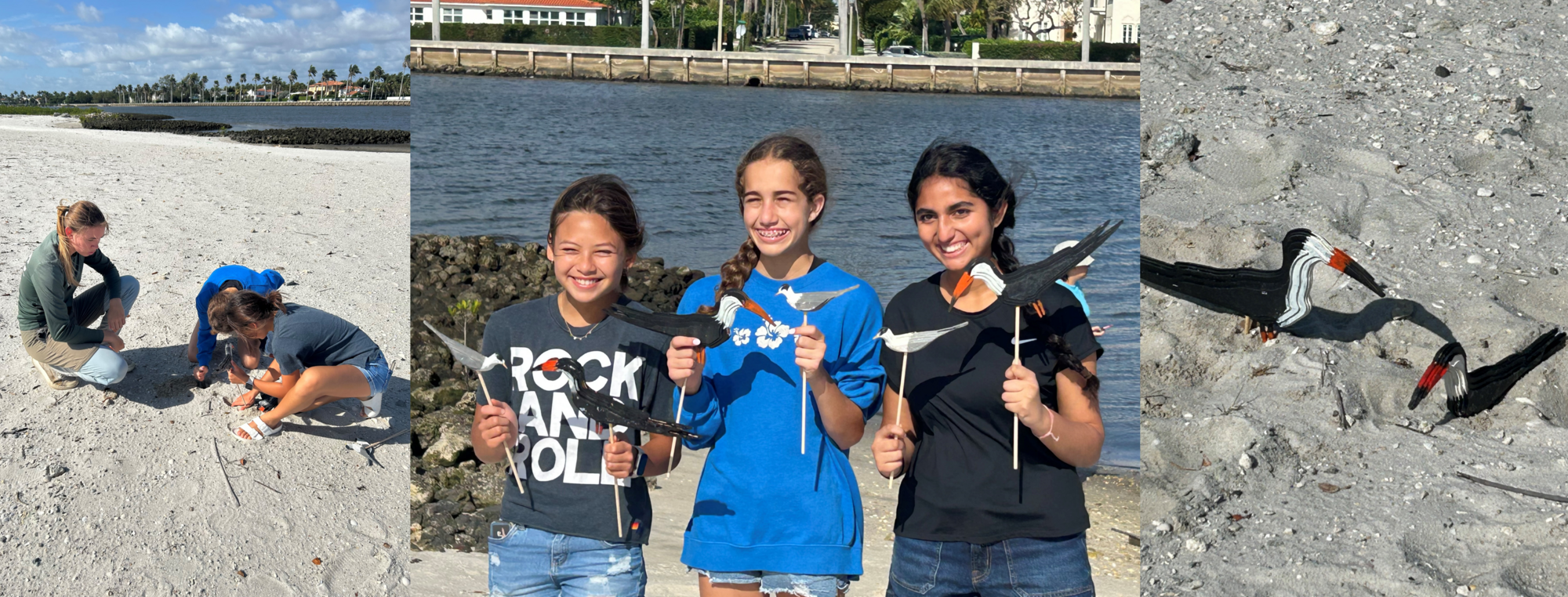May Wrack Line Newsletter
Florida Fish & Wildlife Conservation Commission sent this bulletin at 05/01/2024 08:00 AM EDT
In This Issue
Events & RemindersMay 7, 6:30 p.m. EST: Bird Steward Training for Pinellas County Black Skimmer Colonies. Register here for this Zoom event. May 10: Global Big Day and World Migratory Bird Day May 13-19: Third survey count window, see the Breeding Bird Protocol. Whenever possible, weekly surveys are preferred for routes with active nesting. Weekly surveys help capture information about peak counts. May 24-26. Memorial Day Weekend! Shorebirds and seabirds nesting along the coast need more support during busy holiday weekends. Can you help? Please check the FSA website. Hot Off The Press2024 Audubon Florida Coastal Report
Rooftop Nesting Article (pg. 38-39)
TrainingsIn 2022, the FWC approved new Guidelines for four species of imperiled beach-nesting birds (IBNB): American oystercatcher, snowy plover, least tern, black skimmer. The Guidelines took effect on October 1st, 2024. Guidelines clarify protections for the species, provide options for avoiding impacts, and provide information on permitting, including minimization and mitigation options, when impacts are unavoidable. FWC is excited to announce that it is hosting several Imperiled Beach-Nesting Bird (IBNB) Survey Experience Training opportunities this year. The first scheduled trainings are in the Panhandle from May 14th to May 16th and St. Johns County from June 17th to June 19th. These are great opportunities, especially for those seeking to gain the necessary skills and experience to become an IBNB Permitted Monitor.
IBNB Permitted Monitors are hired to survey, post, and protect shorebirds during coastal projects and events. IBNB Permitted Monitors are trained, dedicated individuals with proven shorebird and seabird identification skills and avian survey experience. They are qualified to assist FWC Incidental Take Permittees with minimizing and avoiding harm or harassment of imperiled beach-nesting birds during project activities.
Space is limited and will be allocated on a first-come, first-served basis. Priority will be given to those who can commit to attending all three days and who need survey experience to become IBNB Permitted Monitors.
The IBNB Permitted Monitor application is available: please visit the FWC's IBNB Permitted Monitor website and FWC’s permitting website.
Panhandle training details:
St. John’s training details:
FSA NewsStudents Create and Install imperiled Seabird Decoys For use at the Lake Worth Lagoon Islands |
2023 Shorebird & Seabird Abundance EstimatesWe are excited to share the 2023 Florida statewide abundance estimates for breeding American oystercatchers, snowy plovers, Wilson's plovers, least terns, and black skimmers! We used data entered into the Florida Shorebird Database by Florida Shorebird Alliance (FSA) partners to estimate the abundance of the three focal shorebird species: American oystercatcher, snowy plover, and Wilson's plover and the two focal seabird species: black skimmer and least tern. Abundance reflects the number of breeding individuals (not pairs) counted along survey routes in Florida. Counts follow the methods in the Breeding Bird Protocol and are reviewed for quality and consistency before analysis. We grouped data in both space and time to account for possible bird movement for each species. Each abundance estimate is presented alongside 95% confidence intervals, which represent variance in the data.
Estimates include rooftop-nesting American oystercatchers, least terns, and black skimmers. In 2023, 43% of least terns nested on rooftops, compared to 1% of black skimmers and 4% of oystercatchers. It is possible to accurately estimate the breeding abundance of the focal shorebird species thanks to the annual comprehensive survey coverage by FSA monitoring partners. Your contributions make this work possible! To learn more about how these estimates are calculated, see the 2021 Monitoring Data at Work Report, the Shorebird Abundance Estimates Webinar, the Seabird Abundance Estimates Webinar, or email flshorebirddatabase@MyFWC.com |

FSD Updates
All About Rooftops
The 2025 breeding season is here, and rooftop-nesting birds are starting to nest! Here are a few tips on entering rooftop data, and how to retire rooftops from the Database.
Thank you to all FSA partners who have been busy collecting and entering data so far! If you have questions or need assistance with data entry or collection, email us at FLShorebirdDatabase@MyFWC.com. We are happy to help!
Rooftop Data Entry Tips
When entering rooftop surveys into the FSD, there are three options to report rooftop nesting status:
- No nesting yet this year: If no shorebirds or seabirds have been seen at the rooftop yet this breeding season, then the nest status should be reported as No Nesting Yet This Year.
- Active: As soon as a rooftop nesting shorebird or seabird is seen using the roof, then the nest status should be reported as Active. The rooftop will be considered Active for as long as birds are seen or heard on roof, hovering over the roof, or flying to and from the roof.
- No longer active: Rooftops are considered No Longer Active when the birds that were nesting on the rooftop are not currently present at the rooftop.
Remember that a rooftop can only be reported as No Longer Active if the rooftop has been Active at least once during the current breeding season. Likewise, once a rooftop has been reported as Active, it cannot later be reported as No Nesting Yet This Year. Instead, it should be reported as No Longer Active. If birds return to the rooftop, then the rooftop can be reported as Active again.

Retiring Rooftops
We retire a rooftop from the FSD when a rooftop is no longer suitable for nesting, such as when a rooftop is reroofed with non-gravel material or the building is torn down. A rooftop that has been deemed no longer suitable for nesting does not need to be monitored. The FSD data team will retire the rooftop from the database, and you can focus your monitoring efforts elsewhere.
Do you know of a rooftop that needs to be retired? Let us and your local partnership coordinator know! Email us at FLShorebirdDatabase@MyFWC.com. Be sure to include (a) the rooftop name and location, (b) why the rooftop is no longer suitable, and (c) when the rooftop became unsuitable.
The FSD data team retires rooftops in batches several times a year. There may be a delay between when you report a rooftop for retirement and when the rooftop is retired from the database.
Thank you! Your participation in this process helps us keep the list of suitable rooftops as accurate as possible.
Ebb Tidings
|
|
Least Terns are Back –
Familiar Feathers! 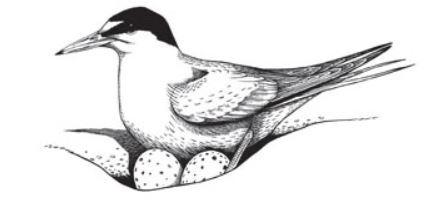
The 2025 seabird breeding season is upon us! Beginning in March, we had our first sightings of Least Terns in the state of Florida. These charismatic birds migrate from Central and South America to nest on our sandy beaches, shell islands, and gravel rooftops. As a colonial nesting species, Least Terns nest in large groups. So, when you see one, you’re likely to see many more! Additionally, we can expect up to a third of this species’ breeding population to utilize suitable nesting habitats in Florida until their departure in August-September. For guidance on monitoring seabird colonies in Florida, see pages 9-13 in the 2025 Breeding Bird Protocol
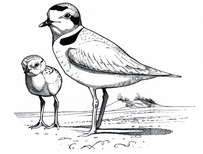
Want to get involved?
Email shorebird@MyFWC.com for more information about your local partnership.
Join the flock on social media: Florida Shorebird Alliance Facebook Group
|
The Florida Shorebird Alliance (FSA) is a statewide partnership of agencies, non-government organizations, and individuals committed to advancing shorebird and seabird conservation in Florida. FSA partners coordinate their independent work and collaborate to identify and address important needs regarding research, management, education, outreach, and public policy. The FSA accommodates a wide range of views on the best strategies to conserve shorebirds and seabirds. However, all partners share the same goal of establishing areas where seabird and shorebird populations are viable and managed in balance with human activities.



